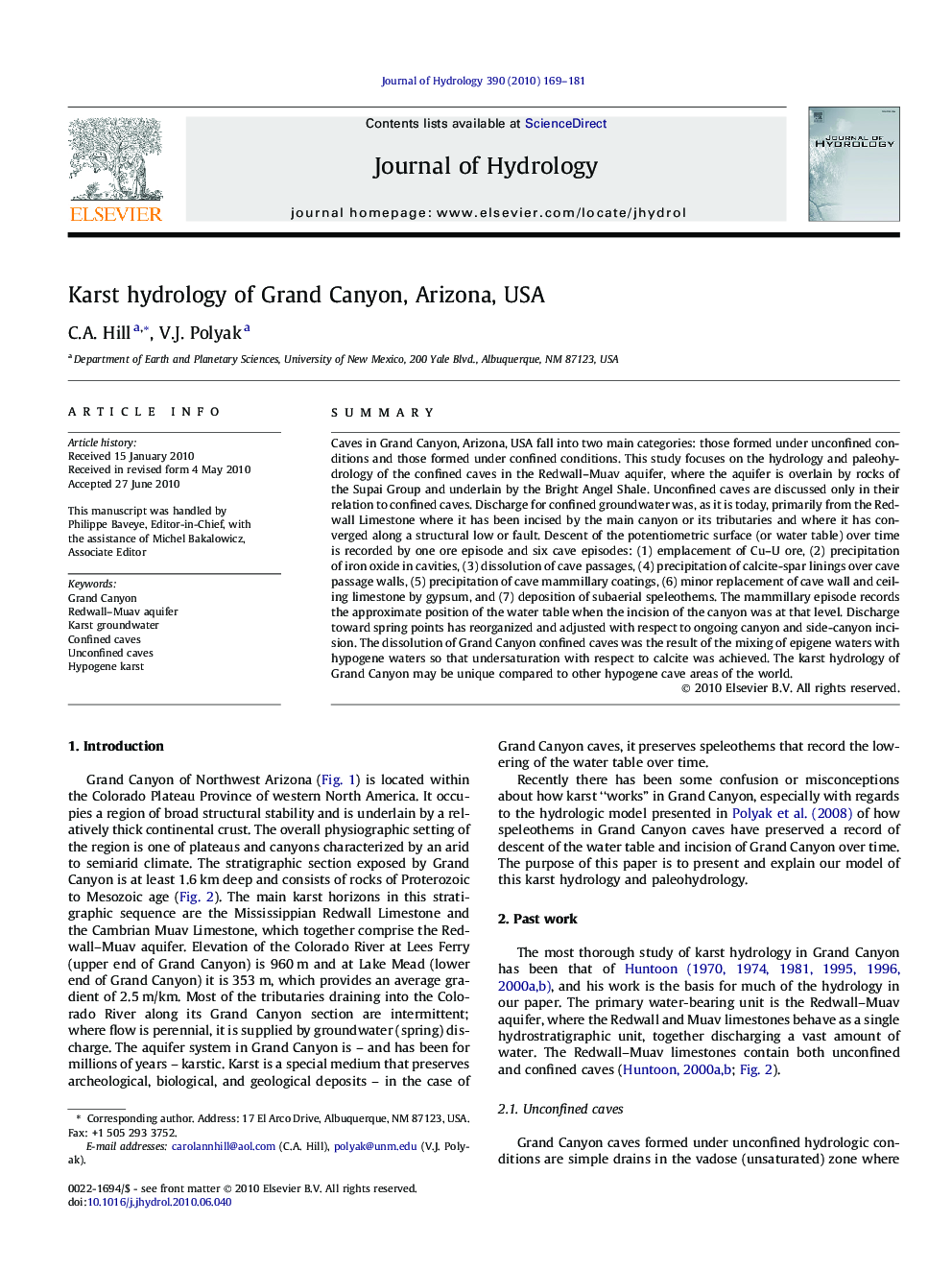| Article ID | Journal | Published Year | Pages | File Type |
|---|---|---|---|---|
| 4578033 | Journal of Hydrology | 2010 | 13 Pages |
SummaryCaves in Grand Canyon, Arizona, USA fall into two main categories: those formed under unconfined conditions and those formed under confined conditions. This study focuses on the hydrology and paleohydrology of the confined caves in the Redwall–Muav aquifer, where the aquifer is overlain by rocks of the Supai Group and underlain by the Bright Angel Shale. Unconfined caves are discussed only in their relation to confined caves. Discharge for confined groundwater was, as it is today, primarily from the Redwall Limestone where it has been incised by the main canyon or its tributaries and where it has converged along a structural low or fault. Descent of the potentiometric surface (or water table) over time is recorded by one ore episode and six cave episodes: (1) emplacement of Cu–U ore, (2) precipitation of iron oxide in cavities, (3) dissolution of cave passages, (4) precipitation of calcite-spar linings over cave passage walls, (5) precipitation of cave mammillary coatings, (6) minor replacement of cave wall and ceiling limestone by gypsum, and (7) deposition of subaerial speleothems. The mammillary episode records the approximate position of the water table when the incision of the canyon was at that level. Discharge toward spring points has reorganized and adjusted with respect to ongoing canyon and side-canyon incision. The dissolution of Grand Canyon confined caves was the result of the mixing of epigene waters with hypogene waters so that undersaturation with respect to calcite was achieved. The karst hydrology of Grand Canyon may be unique compared to other hypogene cave areas of the world.
